Norman Rockwell for Smithsonian Magazine
OCTOBER 1, 2013
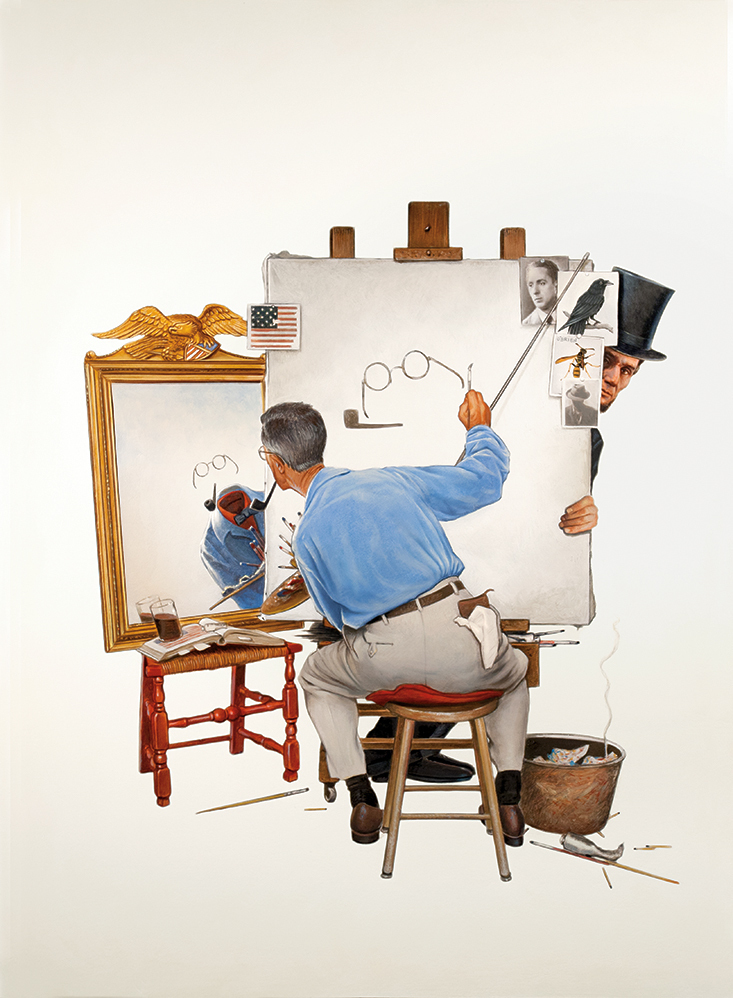
One afternoon when I was in high school, I wandered into the school's library and started looking at some sports books. One that caught my eye was a large volume titled, "The Great Heavyweights." In it were some wonderful black and white photos of historic heavyweights and their boxing exploits. At the time I was boxing and apparently thought my recent growth spurt would eventually make me a heavyweight. I loved Ali, but also was fascinated with Joe Louis and Jack Johnson. I sat on the floor and leafed carefully through the book, one image at a time. Next I moved over to the art book section. I think I was planning on doing a large painting of Ali, so I needed to figure out how to do it. In this section was a grey book titled, "Norman Rockwell, Illustrator." Inside, the book was a wonderfully mapped out series of drawings and paintings that showed how Rockwell worked. Full value drawings, all figured out, then painting. It made sense to me, and also introduced me to the profession, illustration.
These two books were taken that day (ahem) and I feel symbolized the fantasy and reality future I was skirting for the next several years. At the end of my senior year, I quietly accepted this possible profession, illustrator, as a more attainable goal.
~~~~~~
Norman Rockwell educated most of this country in the 20th century about the profession of illustration. Almost every art student comes to know his work, sometimes running away from it, sometimes towards it, but never unaware of it. No matter one's feelings about the sentiments of the idealized world he often depicted, one visit to the Rockwell Museum in Stockbridge, Massachusetts certainly shows just how masterful a painter he was and that the social issues he depicted in later years reflected an artist in full bloom.
Suffice it to say, I admire his work and his role in educating the nation about the power of illustration. Even today his images stay in our consciousness enough to be cultural touchstones.
It is because of the ubiquitous nature of much of his work that artists often use it to illustrate ideas.
Recently I was asked by Smithsonian Magazine to illustrate the October 2013, "Secrets of American History" issue. The pitch was possibly using Rockwell's triple self-portrait as a starting point.
I took it as an opportunity do a 'master copy' with a twist. In this case, some trick that the viewer might not see right away, which is incidentally, something Rockwell had fun with for the Saturday Evening Post around April Fool's day. As it often happens, ideas come out of the act of drawing, so, as I sketched out this cover, getting to his reflection revealed the idea. "Who was Norman Rockwell?" A pair of glasses and a pipe and Rockwell as an invisible man in both the mirror and on the canvas seemed to work.
The next issue was the illustration should include the various stories around the painting instead of Rockwell's references and inspirations. I suppose it is sort of a visual index of the issue.
I learned a lot doing it. I am known by my students as a stickler for the avoidance of tangents and this piece has many. I asked myself over and over if tangents were not as big a deal as I make them out to be or is it that tangents are ok if used correctly? I was certainly not going to move the palette out of the lower left corner of the canvas or shift his feet so that thy didn't touch the stool legs. In a brave move, I put Lincoln in there with his hat ALMOST forming a tangent with a photo.
In this month of putting together a retrospective in Lyme Connecticut (October 11th- January 11th) I liked thinking back on how this career as an illustrator might have stared with me pinching a few books and pondering potential paths.
These two books were taken that day (ahem) and I feel symbolized the fantasy and reality future I was skirting for the next several years. At the end of my senior year, I quietly accepted this possible profession, illustrator, as a more attainable goal.
~~~~~~
Norman Rockwell educated most of this country in the 20th century about the profession of illustration. Almost every art student comes to know his work, sometimes running away from it, sometimes towards it, but never unaware of it. No matter one's feelings about the sentiments of the idealized world he often depicted, one visit to the Rockwell Museum in Stockbridge, Massachusetts certainly shows just how masterful a painter he was and that the social issues he depicted in later years reflected an artist in full bloom.
Suffice it to say, I admire his work and his role in educating the nation about the power of illustration. Even today his images stay in our consciousness enough to be cultural touchstones.
It is because of the ubiquitous nature of much of his work that artists often use it to illustrate ideas.
Recently I was asked by Smithsonian Magazine to illustrate the October 2013, "Secrets of American History" issue. The pitch was possibly using Rockwell's triple self-portrait as a starting point.
I took it as an opportunity do a 'master copy' with a twist. In this case, some trick that the viewer might not see right away, which is incidentally, something Rockwell had fun with for the Saturday Evening Post around April Fool's day. As it often happens, ideas come out of the act of drawing, so, as I sketched out this cover, getting to his reflection revealed the idea. "Who was Norman Rockwell?" A pair of glasses and a pipe and Rockwell as an invisible man in both the mirror and on the canvas seemed to work.
The next issue was the illustration should include the various stories around the painting instead of Rockwell's references and inspirations. I suppose it is sort of a visual index of the issue.
I learned a lot doing it. I am known by my students as a stickler for the avoidance of tangents and this piece has many. I asked myself over and over if tangents were not as big a deal as I make them out to be or is it that tangents are ok if used correctly? I was certainly not going to move the palette out of the lower left corner of the canvas or shift his feet so that thy didn't touch the stool legs. In a brave move, I put Lincoln in there with his hat ALMOST forming a tangent with a photo.
In this month of putting together a retrospective in Lyme Connecticut (October 11th- January 11th) I liked thinking back on how this career as an illustrator might have stared with me pinching a few books and pondering potential paths.

Sketch 1
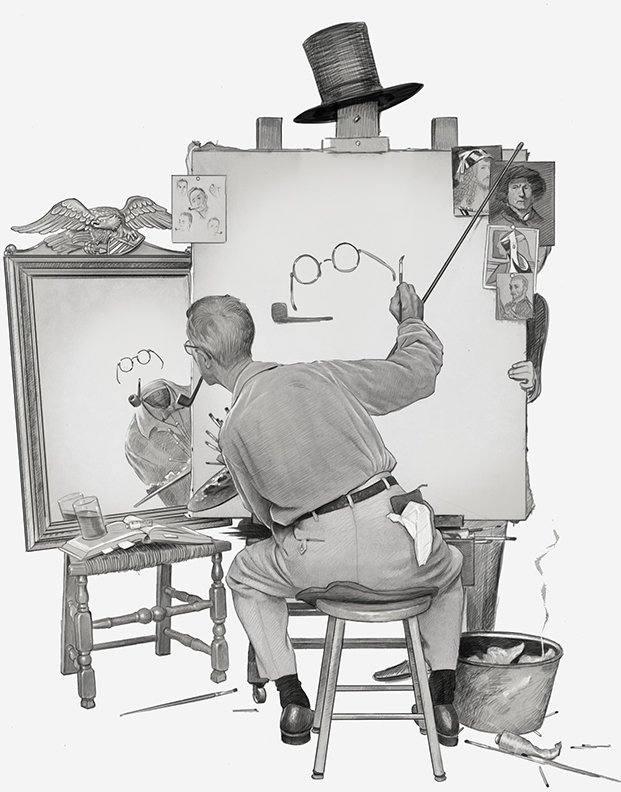
Sketch 2. I liked the hat up there rather than having to add Lincoln, but it interfered with the Masthead.
I also needed to make Lincoln seem taller, which he does not seem behind that canvas.
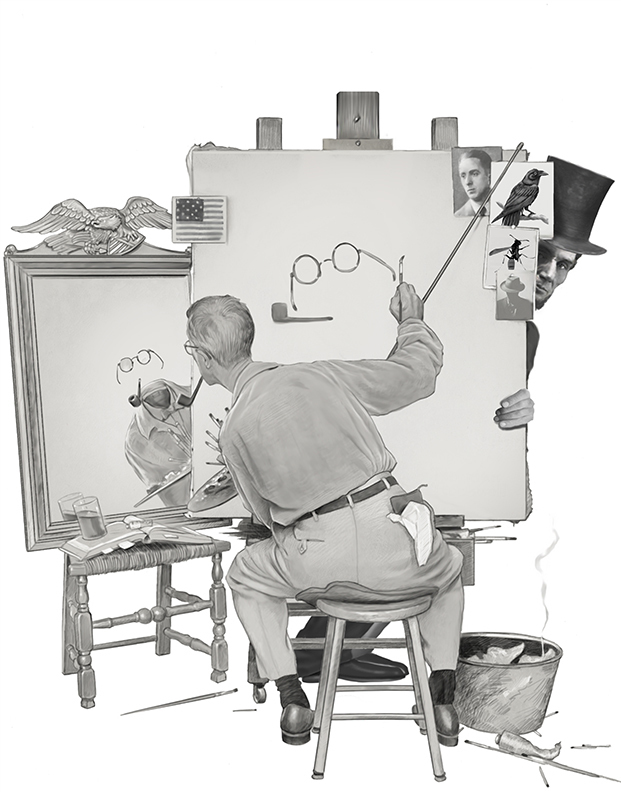
Sketch 3, approved.
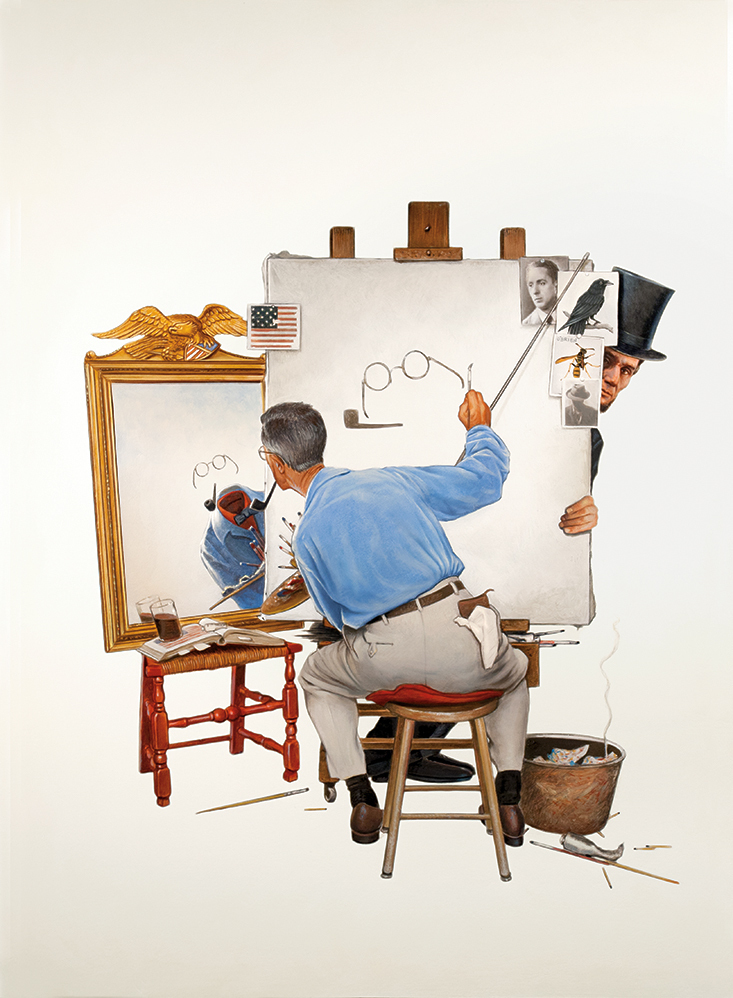
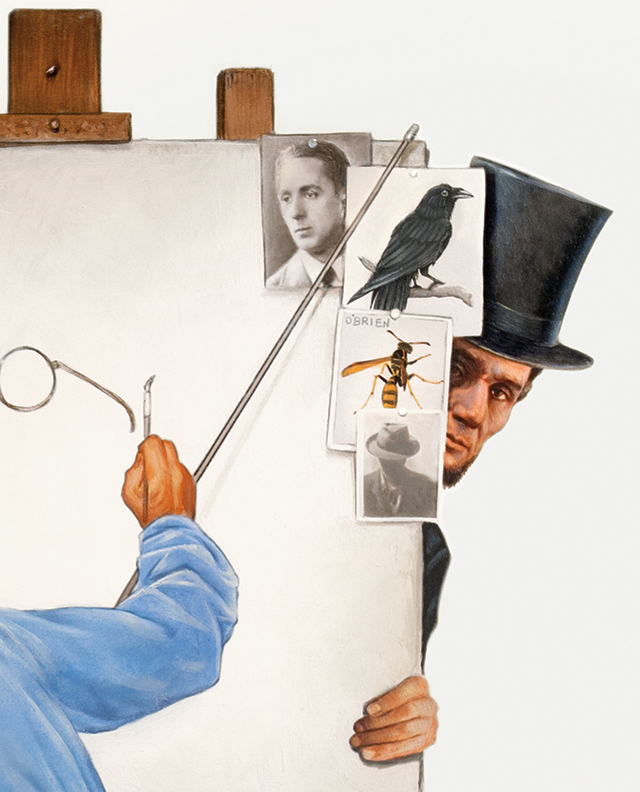

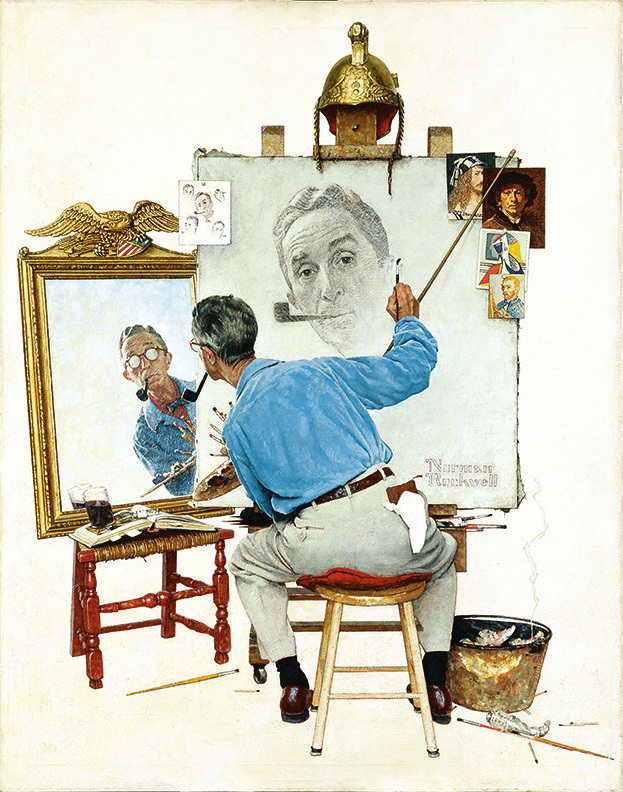
I debated showing this here. It's full of smart brushstrokes and texture I just can't do. I tried here and there...
The Stories in the October issue of Smithsonian Magazine...
http://www.smithsonianmag.com/issue/October_2013.html
Mention of the cover on the Norman Rockwell Museum website....
http://www.nrm.org/2013/09/illustrator-tim-obrien-tips-his-hat-to-rockwell/
http://www.smithsonianmag.com/issue/October_2013.html
Mention of the cover on the Norman Rockwell Museum website....
http://www.nrm.org/2013/09/illustrator-tim-obrien-tips-his-hat-to-rockwell/
One final item;
The contributer page is illustrated by a recent former student, Zach Meyer.
http://www.zachmeyerillustration.com/
He made me look young...he gets an A again.
Great work Zach!
The contributer page is illustrated by a recent former student, Zach Meyer.
http://www.zachmeyerillustration.com/
He made me look young...he gets an A again.
Great work Zach!

© 2024 Tim O'Brien
